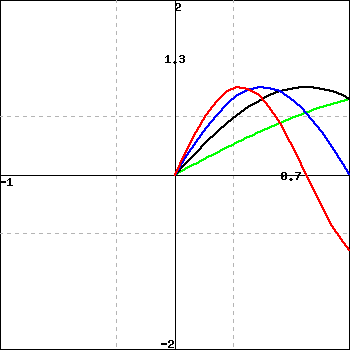In this problem we find the eigenfunctions and eigenvalues of the differential equation
on the interval , where , with boundary values
For the general solution of the differential equation in the following cases use A and B for your constants, for example . For the variable type the word lambda, otherwise treat it as you would any other variable.
Case 1:
(1a.) (Fill all three answer blanks to receive credit.) Ignoring the boundary values for a moment, the general solution of differential equation is
.
Apply the boundary conditions to the general solution to obtain two equations relating to :
=
=
(1b.) Solving for A and B we obtain
A =
B =
Case 2:
(2a.) (Fill all three answer blanks to receive credit.) Ignoring the boundary values for a moment, the general solution of differential equation is
.
Apply the boundary conditions to obtain equations relating to :
=
=
(2b.) Since , the only solution of these equations is
A =
B =
Case 3:
(3a.) (Fill all three answer blanks to receive credit.) Ignoring the boundary values, the general solution is
.
Apply the boundary conditions to obtain equations relating to :
=
=
(3b.) Assuming the solution is not identically zero, these equations say that
(3c.) For all integers n, , so the eigenvalues are
for positive integers .
(3d.) List the first four nonzero eigenfunctions in order of increasing eigenvalue.
, , , ,
Here are graphs of the first four nonzero eigenfunctions on .

(3e.) List the eigenfunctions in increasing order of their eigenvalues by their color - green, red, blue, black:
You can earn partial credit on this problem.